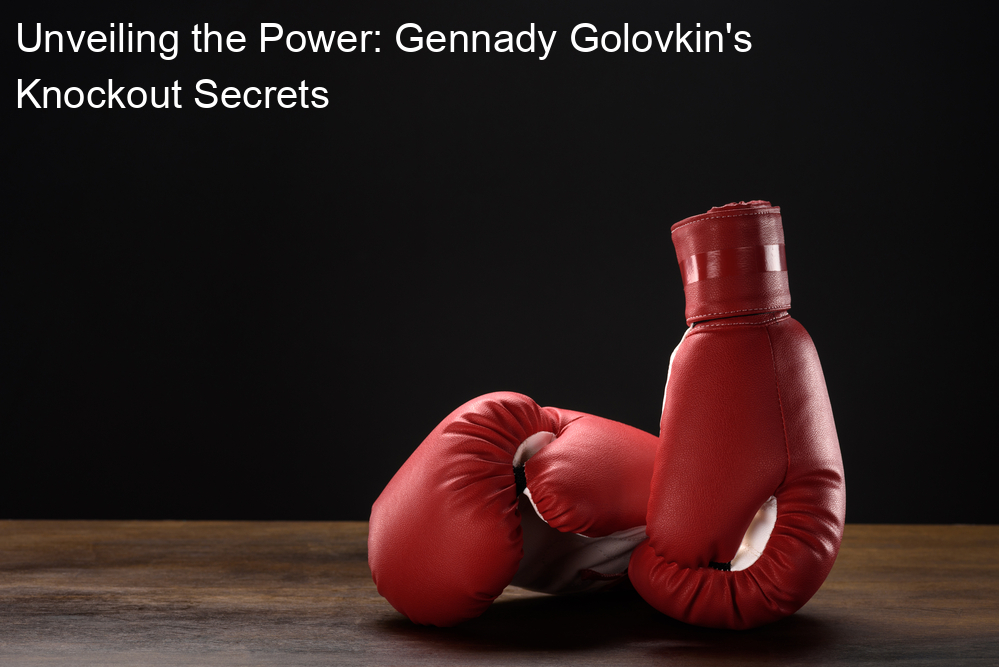![]()
Introduction: The Boxing Gym Legacy
Boxing, a sport that has been around for centuries, has a rich and storied history. Central to this history are boxing gyms, the training grounds for both amateur and professional boxers. These gyms have played a significant role in shaping the sport and its iconic figures. In this blog post, we will explore the legacy of boxing gyms and their impact on the sport and its athletes.
- The role of boxing gyms in the history of the sport
- How boxing gyms have shaped iconic boxers
Boxing gyms have been the backbone of the sport since its inception. They are the places where boxers hone their skills, learn the art of the sport, and prepare for their fights. In the early days, boxing gyms were often makeshift spaces, with minimal equipment and facilities. However, they were the birthplaces of boxing techniques and strategies that are still used today.
Over the years, boxing gyms have evolved, becoming more sophisticated and specialized. They now offer a range of training programs and facilities to cater to different levels of boxers, from beginners to professionals. Despite these changes, the essence of boxing gyms remains the same – they are the heart and soul of the sport, fostering a sense of community and camaraderie among boxers and trainers.
Boxing gyms have not only shaped the sport but also the athletes who participate in it. Many of the world’s most iconic boxers, such as Muhammad Ali, Mike Tyson, and Manny Pacquiao, started their boxing journey in these gyms. They spent countless hours training, sparring, and learning the ropes of the sport in these spaces.
These gyms provided the necessary environment for these boxers to develop their skills, discipline, and resilience. They also offered them the guidance and mentorship of experienced trainers and coaches. The influence of these gyms on these boxers’ careers is undeniable. They were instrumental in molding them into the champions and legends they became.
In conclusion, boxing gyms have played a pivotal role in the history of the sport and the careers of its athletes. They are more than just training facilities; they are institutions that carry the legacy of the sport and its champions. As we delve deeper into the stories of legendary boxing gyms and their iconic boxers, we will further appreciate the enduring legacy of these boxing gyms.
Legendary Boxing Gyms and Their Stories
Boxing gyms have been the cradle of many legendary boxers, nurturing their skills and shaping their careers. Among these, the Kronk Gym stands out as a true icon in the boxing world.
The Kronk Gym: A Boxing Icon
Located in the heart of Detroit, the Kronk Gym has become synonymous with boxing greatness. Its story is one of dedication, resilience, and a relentless pursuit of excellence.
- The history of the Kronk Gym
- Boxing icons nurtured at the Kronk Gym
The Kronk Gym was established in 1970 by the legendary trainer Emanuel Steward. It started as a small community center, but quickly gained a reputation for producing world-class boxers. Despite facing financial difficulties and even closure, the Kronk Gym has always found a way to bounce back, embodying the spirit of the fighters it has nurtured.
The Kronk Gym has been home to many boxing legends. The likes of Thomas “Hitman” Hearns, Lennox Lewis, and Wladimir Klitschko have all honed their skills under the watchful eye of Emanuel Steward. These champions are a testament to the exceptional training and mentorship provided at the Kronk Gym.
The Kronk Gym’s legacy is not just about producing champions, but also about instilling the values of discipline, hard work, and resilience in its fighters. It’s a place where dreams are forged in sweat and determination, and where the spirit of boxing lives on.
Gleason’s Gym: A Boxing Gym Legend
Stepping into the world of boxing, one cannot overlook the legendary Gleason’s Gym. This gym has been a cornerstone of boxing, nurturing talents and creating champions. Let’s delve into some captivating stories from Gleason’s Gym and explore the boxers who have trained there.
- Stories from Gleason’s Gym
- Boxers who have trained at Gleason’s Gym
Founded in 1937, Gleason’s Gym has been a beacon of hope and determination for many. The gym’s walls have witnessed countless stories of struggle, triumph, and resilience. One such story is of Jake LaMotta, the ‘Raging Bull.’ He trained at Gleason’s Gym, transforming from a street brawler into a world champion. His story is a testament to the gym’s dedication to nurturing raw talent into refined skill.
Over the years, Gleason’s Gym has been a training ground for numerous boxing legends. Apart from Jake LaMotta, the gym has seen the likes of Muhammad Ali, Mike Tyson, and Roberto Duran. These boxers have etched their names in the annals of boxing history, and their journey started at Gleason’s Gym.
| Boxer | Title Won |
|---|---|
| Jake LaMotta | World Middleweight Championship |
| Muhammad Ali | World Heavyweight Championship |
| Mike Tyson | Undisputed World Heavyweight Champion |
| Roberto Duran | World Lightweight Championship |
Indeed, Gleason’s Gym is more than just a boxing gym. It is a place where dreams are nurtured, skills are honed, and legends are born. The legacy of Gleason’s Gym continues to inspire and motivate aspiring boxers worldwide.
Iconic Boxers and Their Gym Heritage
Boxing is a sport with a rich history, and a significant part of that history is the gyms where iconic boxers trained. These gyms have played a crucial role in shaping the careers of these boxers. One such example is the relationship between Muhammad Ali and the 5th Street Gym.
Muhammad Ali and the 5th Street Gym
Known as “The Greatest,” Muhammad Ali is a legend in the world of boxing. His journey to greatness started at the 5th Street Gym in Miami, Florida.
- Ali’s early years at the 5th Street Gym
- How the 5th Street Gym shaped Ali’s career
Ali, then known as Cassius Clay, began training at the 5th Street Gym in the early 1960s. Under the guidance of trainer Angelo Dundee, Ali honed his skills and developed his unique style. The gym was a melting pot of talent, and Ali often sparred with other boxers, learning and growing with each match.
The 5th Street Gym played a pivotal role in Ali’s career. It was here that he developed his famous “float like a butterfly, sting like a bee” style. Dundee encouraged Ali’s unconventional tactics, such as his reliance on speed and agility over brute strength. This unique approach set Ali apart from other boxers and played a significant role in his success.
Ali’s relationship with the 5th Street Gym is a testament to the impact a gym can have on a boxer’s career. The right environment, coupled with dedicated trainers, can shape a boxer’s style and pave the way for a successful career.
| Boxer | Gym | Key Takeaway |
|---|---|---|
| Muhammad Ali | 5th Street Gym | Developed his unique boxing style and honed his skills. |
In conclusion, the 5th Street Gym played a significant role in shaping Muhammad Ali’s career, helping him become one of the most iconic boxers in history.
Mike Tyson and the Catskill Boxing Club
Mike Tyson, one of the most iconic figures in boxing history, has a deep connection with the Catskill Boxing Club. This club played a significant role in shaping Tyson’s boxing style and career.
- Tyson’s training at the Catskill Boxing Club
- The influence of the Catskill Boxing Club on Tyson’s style
Mike Tyson began his boxing journey at the Catskill Boxing Club under the guidance of Cus D’Amato. Tyson moved to Catskill, New York, at the age of 13, where he met D’Amato, a legendary boxing trainer. D’Amato saw potential in Tyson and took him under his wing. Tyson’s training was intense and rigorous. He would train for hours, honing his skills and learning the art of boxing. Tyson’s training at the Catskill Boxing Club was not just about physical strength; it was also about mental toughness and discipline.
The Catskill Boxing Club had a profound influence on Tyson’s boxing style. The club’s training methods, combined with D’Amato’s teachings, helped Tyson develop his unique style. Tyson’s style was aggressive and powerful, yet precise. He was known for his quick punches, strong defense, and ability to knock out opponents in the early rounds. Tyson’s style was a reflection of the Catskill Boxing Club’s philosophy – a blend of power, precision, and discipline.
Let’s take a look at some key facts about Tyson’s time at the Catskill Boxing Club:
| Fact | Details |
|---|---|
| Age when Tyson started training at Catskill | 13 years old |
| Trainer | Cus D’Amato |
| Training regimen | Intense and rigorous, with a focus on mental toughness and discipline |
| Tyson’s boxing style | Aggressive, powerful, and precise |
In conclusion, the Catskill Boxing Club played a pivotal role in Tyson’s career. It was here that Tyson learned the skills and discipline that would make him one of the greatest boxers of all time.
Preserving the History of Boxing Gyms
Boxing gyms have played a significant role in the history of the sport. They have been the training grounds for many legendary boxers and have shaped the sport as we know it today. Preserving these historic sites is crucial for keeping the legacy of boxing alive.
- Efforts to Preserve Famous Boxing Gyms
- The Importance of Preserving Boxing Gym Heritage
There have been numerous efforts to preserve famous boxing gyms. For instance, the 5th Street Gym in Miami, where Muhammad Ali trained, was reopened in 2010 after being closed for many years. The gym was restored to its former glory, with many of its original features being preserved.
Similarly, the Kronk Gym in Detroit, which produced many world champions, was reopened in 2015 after a fire destroyed the original building. The new gym was built in the same location and is a tribute to the original, with photos and memorabilia from its glory days on display.
Preserving the heritage of boxing gyms is important for several reasons. Firstly, these gyms are a part of boxing history. They have been the training grounds for some of the greatest boxers in the world, and their walls have witnessed countless hours of hard work, dedication, and triumph.
Secondly, these gyms serve as a source of inspiration for future generations of boxers. They provide a tangible link to the past and a reminder of the hard work and dedication required to succeed in the sport.
Lastly, preserving these gyms helps to keep the sport of boxing alive. They serve as a reminder of the sport’s rich history and the role it has played in our society. By preserving these gyms, we are preserving a piece of our cultural heritage.
In conclusion, the preservation of boxing gyms is a crucial task that helps maintain the rich history and legacy of the sport. These gyms are not just buildings; they are monuments to the hard work, dedication, and talent of the many boxers who have trained within their walls.
Conclusion: The Enduring Legacy of Legendary Boxing Gyms
As we reach the end of our journey through the history and impact of legendary boxing gyms, it’s clear that these institutions have left an indelible mark on the sport of boxing. Their influence continues to be felt today, and their future looks promising.
- The continued influence of legendary boxing gyms
Legendary boxing gyms like the Kronk Gym in Detroit and Gleason’s Gym in New York have produced some of the world’s greatest boxers. These gyms have not only honed the skills of champions, but they have also shaped the sport itself. Their training methods, philosophies, and traditions continue to be used in gyms around the world.
For example, the Kronk Gym’s emphasis on power and aggression has become a staple in many boxing training programs. Similarly, Gleason’s Gym’s focus on technique and discipline is echoed in countless gyms globally. These legendary gyms have set the standard for what it means to train like a champion.
- The future of boxing gyms in the sport
As we look to the future, it’s clear that boxing gyms will continue to play a crucial role in the sport. They will remain the breeding grounds for the next generation of champions, the places where raw talent is shaped into world-class skill.
Moreover, as the sport of boxing evolves, so too will these gyms. They will adapt to new training methods, incorporate new technologies, and continue to push the boundaries of what is possible in boxing training. But one thing will remain constant: their commitment to excellence, their dedication to the sport, and their enduring legacy.
As the famous boxing trainer Cus D’Amato once said, “The hero and the coward both feel the same thing, but the hero uses his fear, projects it onto his opponent, while the coward runs. It’s the same thing, fear, but it’s what you do with it that matters.” This philosophy, born in the heart of a legendary boxing gym, continues to inspire boxers today and will undoubtedly inspire many more in the future.
In conclusion, the legacy of legendary boxing gyms is far from over. Their influence continues to shape the sport, and their future looks bright. As long as there are boxers with dreams of glory, there will be boxing gyms ready to help them achieve it.





